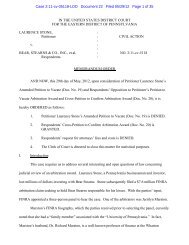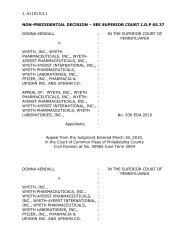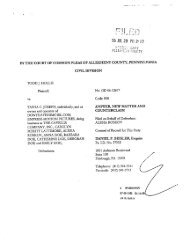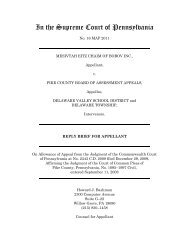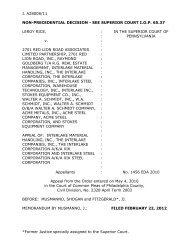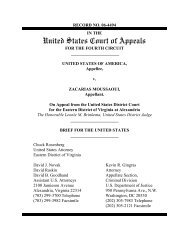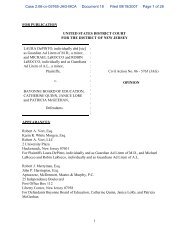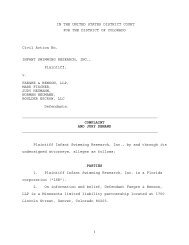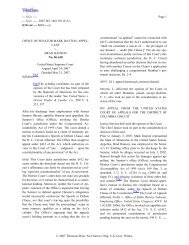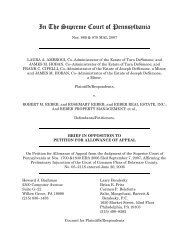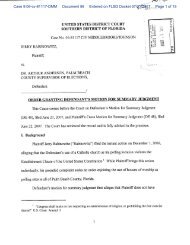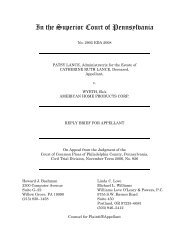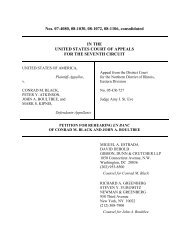In the Superior Court of Pennsylvania - How Appealing
In the Superior Court of Pennsylvania - How Appealing
In the Superior Court of Pennsylvania - How Appealing
You also want an ePaper? Increase the reach of your titles
YUMPU automatically turns print PDFs into web optimized ePapers that Google loves.
Under California law, as under <strong>Pennsylvania</strong> law, <strong>the</strong> discovery rule operates<br />
to postpone <strong>the</strong> commencement <strong>of</strong> <strong>the</strong> statute <strong>of</strong> limitations applicable to a cause <strong>of</strong><br />
action. See Fox v. Ethicon Endo–Surgery, <strong>In</strong>c., 35 Cal. 4th 797, 810–11, 110 P.3d<br />
914, 922–23, 27 Cal. Rptr. 3d 661, 670–71 (2005). And in California, as in<br />
<strong>Pennsylvania</strong>, whe<strong>the</strong>r to apply <strong>the</strong> discovery rule ordinarily presents a question <strong>of</strong><br />
fact for <strong>the</strong> jury. See id. at 810, 110 P.3d at 922, 27 Cal. Rptr. 3d at 670.<br />
Judge Tereshko ruled that <strong>the</strong> claims <strong>of</strong> <strong>the</strong>se 10 California plaintiffs were<br />
time–barred using ei<strong>the</strong>r State’s prescriptive period because, in his view, <strong>the</strong><br />
plaintiffs could not invoke <strong>the</strong> discovery rule. If plaintiffs could invoke <strong>the</strong> discovery<br />
rule, <strong>the</strong>ir claims would be timely under <strong>the</strong> two–year statute <strong>of</strong> limitations that<br />
would apply under both California and <strong>Pennsylvania</strong> law.<br />
Plaintiff Hazel Blaylock was diagnosed with breast cancer in December 2000.<br />
R.2874a. She filed suit against Wyeth and Upjohn in June 2004, within two years <strong>of</strong><br />
<strong>the</strong> WHI study’s results. R.2850a. On <strong>the</strong> fact sheet filed shortly after her<br />
complaint, Ms. Blaylock checked a line indicating that, in November 2001, her<br />
physician informed her that her breast cancer “is related” to hormone <strong>the</strong>rapy<br />
drugs. R.2900a. The fact sheet contained no definition for <strong>the</strong> phrase “is related to”<br />
and does not even suggest that defendants intended to interpret this phrase to<br />
mean that <strong>the</strong> plaintiff was aware <strong>of</strong> what “caused” her breast cancer.<br />
If defendants had wanted to know on what date <strong>the</strong> plaintiff knew <strong>the</strong> cause<br />
<strong>of</strong> her breast cancer, defendants could have asked that question. <strong>In</strong>stead, <strong>the</strong><br />
defendants asked a question that requests <strong>the</strong> plaintiff to explain any conversations<br />
– 13 –



